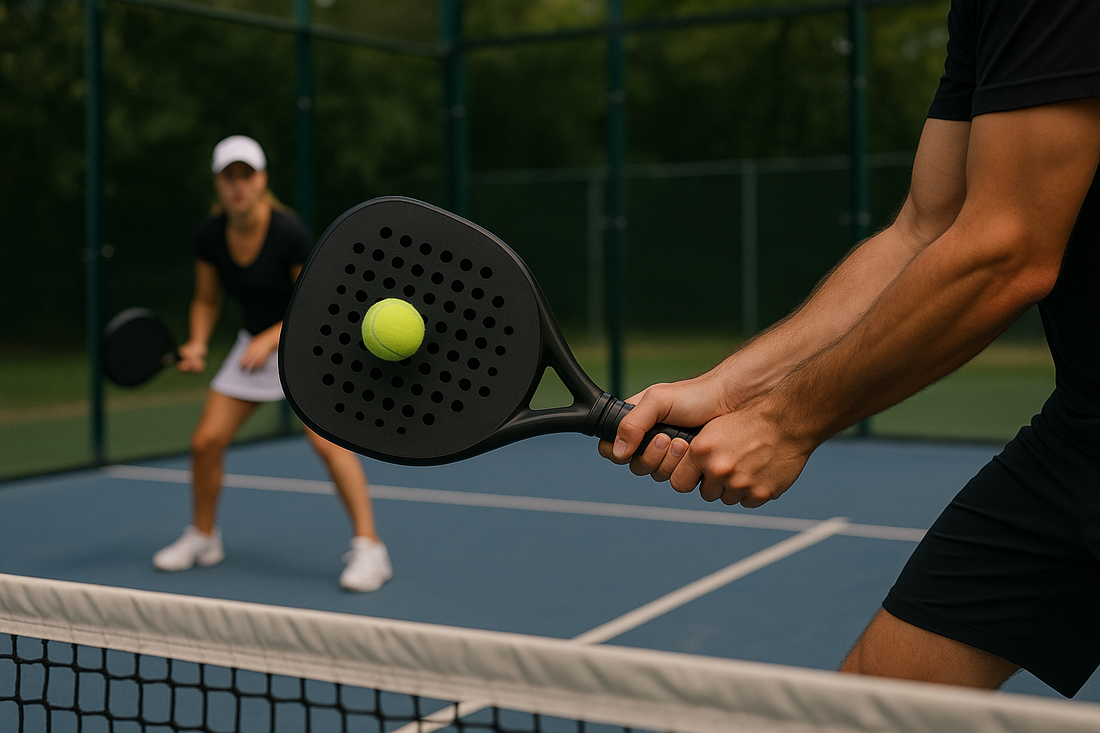
Why Padel is the Fastest Growing Sport in Europe
Why Padel is the Fastest Growing Sport in Europe
Padel has surged in popularity across Europe in recent years, establishing itself firmly as a favourite among racket sports. But what’s driving this impressive growth, and why should you consider picking up a padel racket? This post breaks down the key factors behind padel growth Europe and offers practical insights into why you should play padel today.
What’s Driving Padel Growth in Europe?
Padel’s explosive growth isn’t by chance. Several intertwined factors have fuelled its rapid adoption, making it the fastest-growing sport across multiple European countries.
1. Accessibility and Ease of Learning
- Simpler rules than tennis or squash.
- Smaller courts (10m x 20m) mean less running, easier positioning.
- Rackets are forgiving, and scoring is straightforward.
- Ideal for beginners or players transitioning from tennis or badminton.
2. Social and Community Aspect
- Mostly played as doubles, fostering strong social interaction.
- Padel clubs often combine courts with social spaces- bars, lounges, and classes.
- Events and leagues encourage regular participation and community building.
3. Infrastructure Investment
- European countries, especially Spain, Italy, and Sweden, are investing heavily in padel courts.
- The UK has seen a rapid increase in indoor and outdoor facilities over the last five years.
- Growth supported by federations and national governing bodies promoting the sport.
4. Compact and Cost-Effective
- Courts can fit into smaller spaces than tennis courts, making pads ideal for urban areas.
- Construction and maintenance costs are generally lower than tennis.
- Easier for clubs to add multiple courts and run programmes efficiently.
Why Play Padel? Benefits for Beginners & Improvers
Padel has something for everyone. Here’s why it’s become a top pick for new players and those serious about improving their game.
Physical and Mental Benefits
- Low-impact cardio workout improving fitness without excess strain.
- Enhances reflexes, agility, and hand-eye coordination.
- Mental focus required due to fast rallies and strategic placement.
- Regular play supports wellbeing through exercise and social contact.
Suitable for All Ages and Abilities
- Gentle on joints compared to tennis or squash.
- Easy to pick up, quick to see results, motivating early progress.
- Competitive matches available from entry level up to advanced.
- Inclusive - children, older adults, and mixed-gender pairs thrive in padel.
Padel Growth in Europe: Key Data Highlights
| Country | Estimated Number of Courts (2023) | Growth Rate (2018–2023) | Padel Clubs & Associations |
|---|---|---|---|
| Spain | 15,000+ | +150% | Royal Spanish Padel Federation (FEP) |
| Italy | 2,500+ | +120% | Italian Padel Federation |
| Sweden | 1,800+ | +180% | Swedish Padel Association |
| UK | 300+ | +250% | British Padel Association |
The data show a consistent pattern: increased courts, more participants, and growing league structures supporting grassroots to competitive play.
Common Mistakes to Avoid as a New Padel Player
- Standing too far from the net: Padel rewards quick net play and positioning.
- Overhitting the ball: Control and placement beat power.
- Ignoring the walls: Using the side and back glass walls is a tactical advantage unique to padel.
- Poor racket grip: Developing correct grip early helps prevent injury and improves shot consistency.
- Neglecting warm-up: Due to quick exchanges, warming up prevents injury and improves play.
Pro Tips for Quick Improvement
- Focus on footwork and positioning over power; efficiency wins points.
- Watch experienced players and mimic shot selection and court movement.
- Use the walls in defensive and attacking plays strategically.
- Communicate constantly with your partner - coordination is key.
- Participate in group lessons or clinics to accelerate learning.
FAQs About Padel Growth and Playing
Q1: How quickly can a beginner learn to play padel?
Most can play confidently within a few sessions, as the rules and strokes are straightforward. Many players notice rapid improvement in 3-4 weeks with regular play.
Q2: What equipment do I need to start?
Starter padel rackets and balls are affordable and widely available. Wear trainers suitable for turf or indoor courts and comfortable sportswear.
Q3: Is padel suitable for all fitness levels?
Yes – the sport’s low-impact nature and social format make it friendly to a broad range of fitness levels and ages.
Padel growth in Europe reflects a sport perfectly adapted to modern needs - accessible, social, and physical without being overwhelming. Whether you’re a beginner or upgrading your racket sport game, padel offers practical benefits and a thriving community to join.
Ready to try? Check local padel clubs to find courts and coaching near you.
As padel continues its rapid rise across Europe, more players are discovering the sport’s unique mix of energy, teamwork, and accessibility. If you’re ready to join the movement, explore our related guides — The Ultimate Beginner’s Guide to Padel and Padel vs Pickleball: What’s the Difference? — to help you get started or improve your game. Find your adVANTAge.
